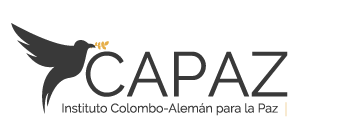
Colombian peace process follow-up
The magistrates for the Special Jurisdiction for Peace (JEP in Spanish) are elected. They are in charge of prosecuting crimes commited within the framework of the conflict
26. September 2017
The United Nations Security Council defines its second mission in Colombia, which will be responsible for verifying the reincorporation to civil and economic life of FARC-EP ex-guerrilla combatants, as well as to ensure their security and the community’s
14. September 2017
The Ejército de Liberación Nacional (ELN) announces a ceasefire scheduled to start on October 1, 2017, for an initial period of 102 days
6. September 2017
The FARC-EP is established as a political party in Colombia under the name of Fuerza Alternativa Revolucionaria del Común (FARC)
31. August 2017
The Decree 1274 of 28 of July 2017 orders to make a transition from Transitory Rural Zones for Normalization (ZVTN) to Territorial Zones of Training and Reincorporation, where the FARC-EP start their transit to civil life
18. August 2017
A mission of United Nations (UN) for monitoring Colombia’s territorial peace is established
11. July 2017
A UN mission certifies the laying down of 7,132 individual arms from FARC-EP
27. June 2017
The FARC- EP move to the Transitory Rural Zones for Normalization (ZVTN), whose objective is to grant the ceasefire and the laying down of arms in order to start with the preparing for reincorporation of FARC-EP to civil life and their transit to legality
31. January 2017
It is announced the formal starting of negotiations with the Ejército de Liberación Nacional guerrillas (ELN)
18. January 2017
The Peace Agreement between the Government and FARC-EP is signed in the Colón Theater in Bogotá
24. November 2016
It is announced a possible starting of negotiations with the Ejército de Liberación Nacional guerrillas (ELN)
10. October 2016
The plebiscite regarding the peace process in Colombia is carried out. ‘NO’ won over ‘YES’ with a 50.23%; this is the reason why the Peace Agreement between the Colombian Government and FARC-EP could not be endorsed
2. October 2016
In an international event, the Peace Agreement between the Government of Colombia and the FARC-EP is signed in Cartagena, Colombia
26. September 2016
Both parties involved in the conflict announce the General Agreement to end the conflict and build a stable and long-lasting peace
24. August 2016
The Constitutional Court approves to initiate a plebiscite regarding the Agreement signed between to Government and FARC-EP
18. July 2016
Both parties of the conflict announce the Agreement regarding the end of the conflict
23. June 2016
Between the Colombian Government and the FARC-EP is formalized the Agreement for the bilateral and definite ceasefire and cessation of hostilities
22. June 2016
The parties in conflict reach consensus regarding the protocol for youngsters under 15 years of age to leave FARC-EP ranks
19. May 2016
The Government and FARC-EP reach consensus in order to give “security and legal stability to the final agreement”
13. May 2016
UN Security Council approved the special mission for monitoring and verification the laying down of arms, ceasefire and cessation of hostilities within the peace process
25. January 2016
The parties in conflict agree about the verification of cease fire, cessation of hostilities and the laying down of arms
19. January 2016
In the negotiating table in Havana, the parties agree about the Victims of the Conflict, Comprehensive System for Truth, Justice, Reparation and Non-Repetition; as well as for the Special Jurisdiction for Peace and its Commitment with Human Rights
15. December 2015
The National Government and FARC-EP reach an agreement in the subject of justice in Havana, Cuba
29. September 2015
The Colombian Government ceases bombings against FARC-EP
25. July 2015
FARC-EP announce a new unilateral ceasefire
8. July 2015
Governments of guarantor countries (Cuba and Norway) ask to de-escalate urgently the conflict between the Colombian Government and the FARC-EP
7. July 2015
The parties of the conflict create a commission to clarify the truth
4. June 2015
It is approved the Regulatory Decree 1038 which regulates the ‘Chair for Peace’. The ‘Chair for Peace’ will be a mandatory subject in every private and public educational institution – Preschool, Elementary and Secondary – in Colombia
25. May 2015
FARC’s unilateral ceasefire is stopped due to the National Government bombings to FARC-EP’s camps
22. May 2015
The FARC-EP announce an indefinite and unilateral ceasefire
17. December 2014
The Historic Commission of the Conflict and its Victims is installed. It looks for the reconciliation and the clarifying of the events within the framework of the conflict.
21. August 2014
Arrival to Havana of the first group of 11 victims of the armed conflict in Colombia to expose their cases and take part in the peace negotiations
16. August 2014
It is agreed that in the 15th and 16th of August, the first group of victims will go to Havana, Cuba to expose their points of view regarding the Peace Agreement between the National Government and the FARC-EP
16. June 2014
Colombia carries out the presidential election and citizens reelect President Juan Manuel Santos
15. June 2014
Within the framework of the election period in Colombia and one week before the presidential runoff, there is a new ceasefire between the Government and the FARC-EP
9. June 2014
The Government and FARC-EP reach their third agreement regarding illicit drugs
16. May 2014
FARC-EP announce the beginning of a 30-day truce
15. December 2013
The parties of the conflict, Colombian Government and FARC-EP, reach a second agreement regarding the political status that would be granted to the insurgent group
6. November 2013
The Colombian Government and the FARC-EP reach their first agreement regarding lands and countryside development
26. May 2013
The Negotiating Table between the Colombian Government and the FARC-EP is installed
19. November 2012


